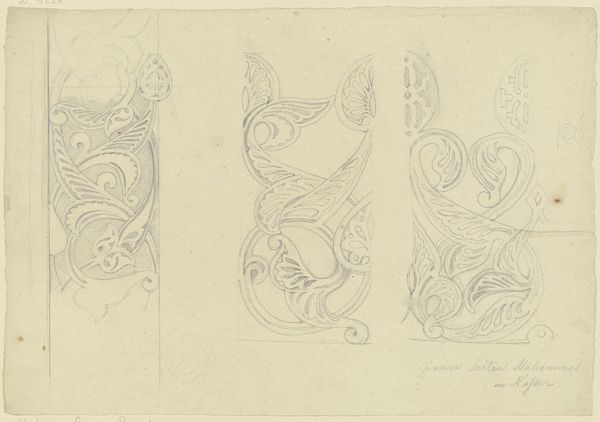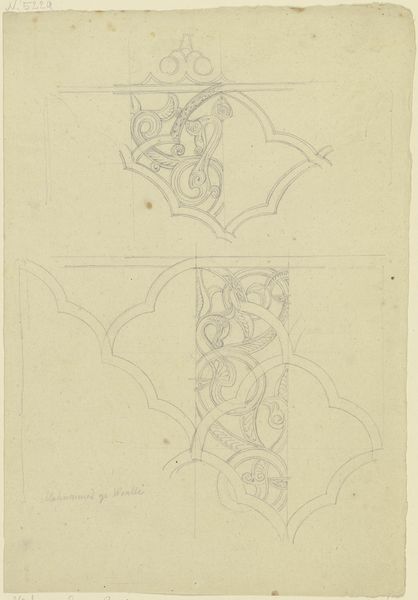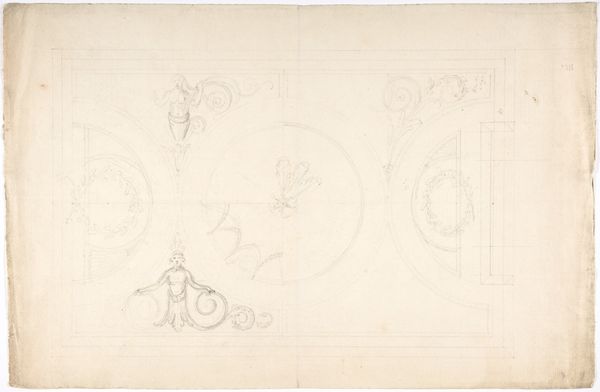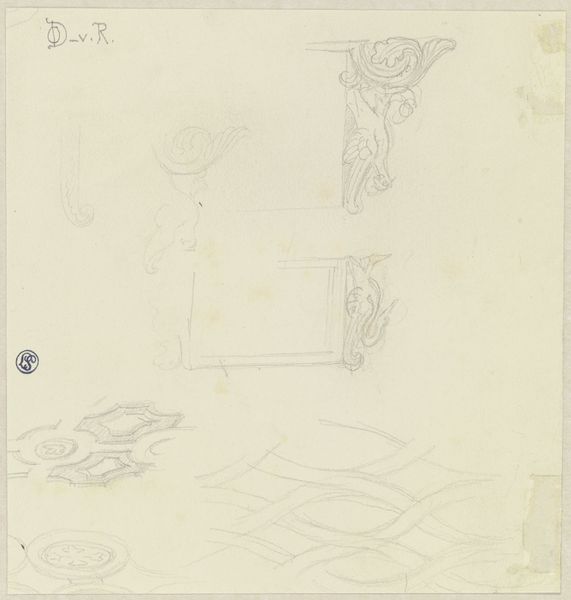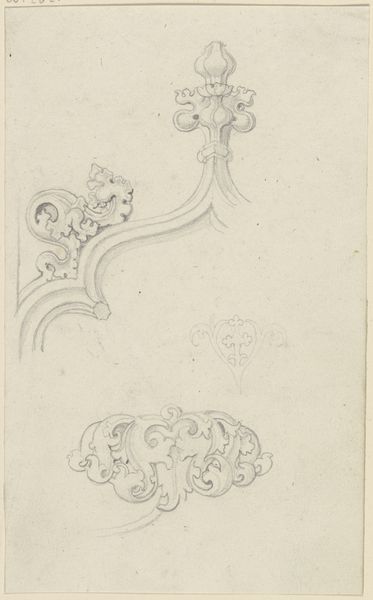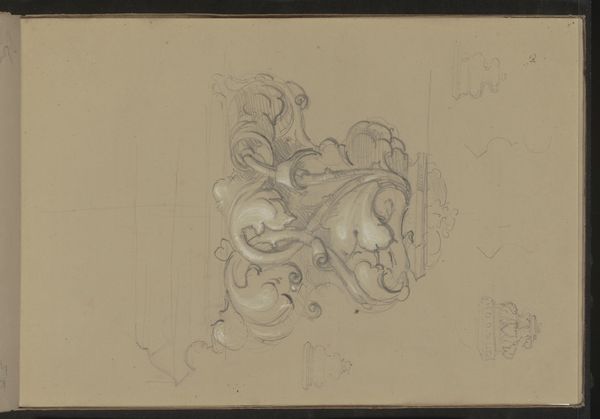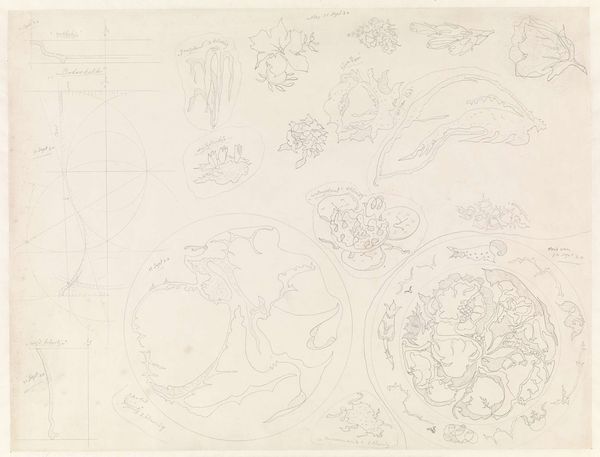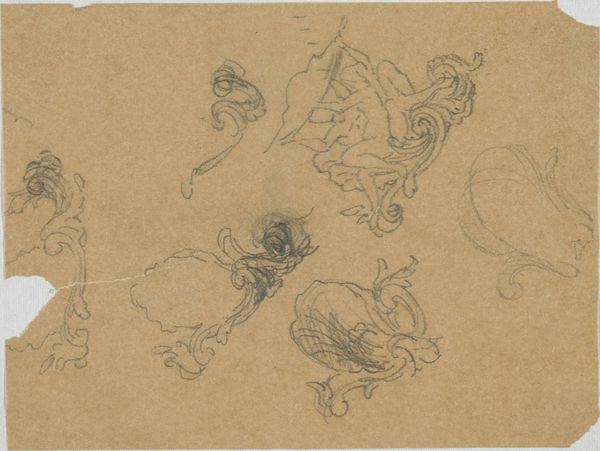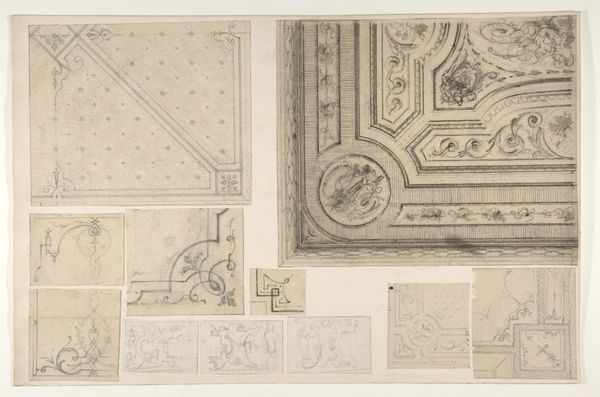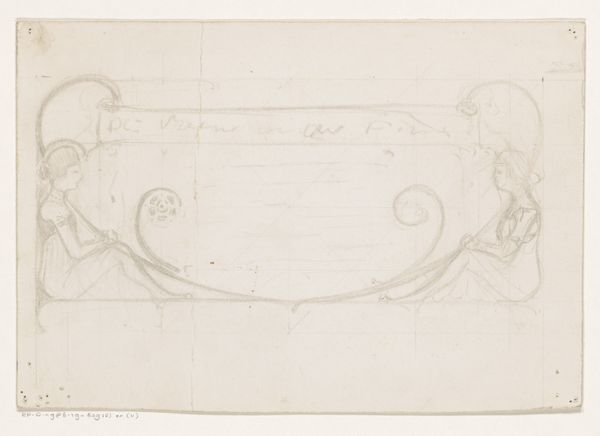
Vegetabiles Muster am Grab des Galaon in der Moschee Giamma d'Omar 1829
0:00
0:00
drawing, paper, pencil
#
drawing
#
paper
#
geometric
#
pencil
#
islamic-art
Copyright: Public Domain
Curator: Here we have "Vegetabiles Muster am Grab des Galaon in der Moschee Giamma d'Omar," a drawing rendered in pencil on paper by Friedrich Maximilian Hessemer, dating to 1829. Editor: My first impression is one of quiet intricacy. The delicate pencil work captures the essence of elaborate designs without the boldness of ink. It feels almost like a whisper of patterns, evoking the sense of a hidden, sacred space. Curator: Hessemer created this study while documenting Islamic art and architecture. These are detailed records of vegetal motifs he observed at the Mosque of Omar in Jerusalem. He's preserving them, one might say, in the face of potentially shifting cultural landscapes. Editor: It is so fascinating how these meticulously drawn vegetal and geometric patterns point to larger socio-political narratives. Consider Hessemer's role as an outsider looking in – the Western gaze framing and interpreting Islamic artistic traditions. What assumptions are embedded in that act of documentation? Curator: Certainly, the act of selection is itself a form of interpretation, even control. By singling out these decorative elements, he isolates them from their architectural and ritual context. In doing so, are they celebrated or dissected, appreciated, or appropriated? Editor: Absolutely. The concept of "Islamic art" is itself a construct that emerges during this period of intense colonialism. Are we looking at a genuine attempt to preserve and understand, or is it simply a reflection of European orientalist fantasies being projected onto a different cultural landscape? I wonder about the original artisans, whose individual stories are submerged beneath the label of tradition. Curator: Yes, the very idea of a single 'Islamic' artistic identity flattens the enormous diversity of regional styles, eras, and artistic intentions across the Muslim world. Hessemer's work is useful to historians precisely because we can excavate these issues. Editor: The soft greys and creams contribute to its air of fragile preservation. These ghostly shapes quietly bring forward critical questions. They remind us of art's entanglement with identity, power, and history. Curator: Indeed, a drawing like this functions as a historical artifact in its own right, containing within its lines not just the patterns of a mosque, but the patterns of cultural exchange and interpretation. Editor: A compelling example of how something seemingly decorative carries so much cultural weight. It makes me curious to keep asking questions, examining art with renewed sensitivity towards its past and present context.
Comments
No comments
Be the first to comment and join the conversation on the ultimate creative platform.
